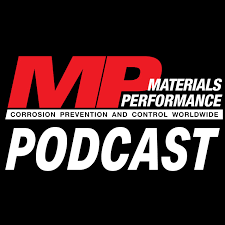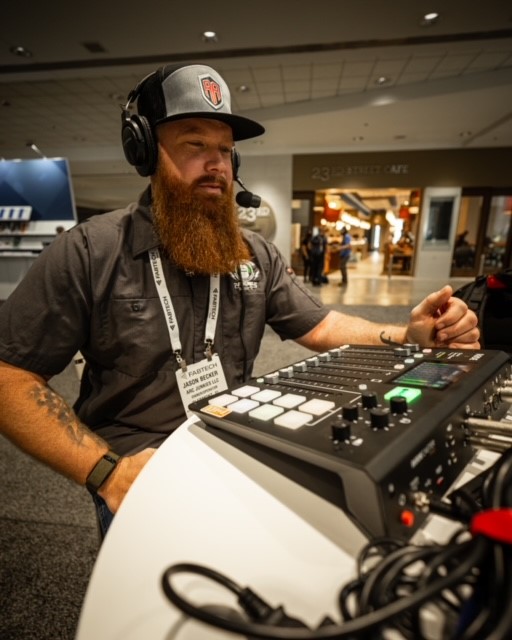Jason Becker, a highly experienced welder/fabricator with 25 years of hands-on experience in the welding industry, recently joined the Materials Performance (MP) Interview Series to discuss why welding quality matters to Association for Materials Protection and Performance (AMPP) members.
Under the American Welding Society (AWS), Becker is a Certified Welding Inspector, Certified Welding Educator, and Certified Welder Performance Qualifier. He currently works as a full-time welding consultant and is dedicated to educating the next generation of welders through his own podcast, called Arc Junkies.
Discussion topics on the podcast included tips to understand weld quality; common welding processes, materials, and inspection techniques; important codes and standards; how to prevent common welding defects; and why workforce development in skilled trades could be critical to the industry’s future.
Read on for a partial Q&A transcript of that episode, and check out the full interview at www.materialsperformance.com/podcasts or at the embedded link beneath this article.
 Q: How significant is weld quality, what constitutes a high-quality weld, and what are the implications of subpar welds… if it isn’t done well?
Q: How significant is weld quality, what constitutes a high-quality weld, and what are the implications of subpar welds… if it isn’t done well?
Becker: Weld quality is paramount. If you think about everything you interact with on a daily basis, it’s welded. Or, welding has touched it at some point. Whether it’s manufacturing the automobile you’re driving in, the bridge you go across to work, or the building you enter.
Weld quality matters, because we need these welds to be able to withstand the intended load. That could be structural steel I-beams for the frame on your vehicle. It can be pretty much anything we interact with on a daily basis. If we have poor quality welds, things start falling apart, and people start having a really bad day when steel structures start falling apart… or automobiles or trailers start coming apart at high rates of speed.
So, weld quality is just as important to the manufacturing or assembling of these items… as the items themselves.
Q: When we talk about welding processes and the impact on quality, what are some of the various techniques that are out there? And how do each of those processes ultimately influence the final quality?
Becker: Primarily, we use four main sources of welding. We have shielded metal arc welding, gas metal arc welding, gas tungsten arc welding, and flux-cored arc welding. There are several other processes, but those are the four that are primarily used. Each one has its own place and its own purpose.
We could use shielded metal arc welding, more commonly referred to as stick welding, for a lot of the stuff that we do outside… because it’s going to deal with dirtier environments. It’s got to be able to withstand the wind loads, and it’s going to make a sound, quality weld. It’s also going to produce something known as a low hydrogen weld, depending on the electrode that you use.
But then we have things like gas metal arc welding, which more commonly referred to as MIG welding. We’re going to use that for more high production… because it uses a shielding gas that’s primarily going to be utilized indoors. So, think of a shop, a warehouse, a manufacturing facility, or robotic applications.
We also have gas tungsten arc welding, which a lot of times is used for aesthetics — when things need to look very clean and very shiny. That process is going to be used in chemical plants, pharmaceutical plants, and food-grade things. Because we’re often using stainless steels, aluminum, and things of that nature.
Then, flux-cored arc welding is going to be a faster process that we would use outdoors. It can withstand the dirtier elements [with] higher rates of deposition, so we can weld a lot faster.
A lot of companies are actually switching to flux-cored versus stick welding out in the field, just because we can do a lot more welding. We can get the same quality of weld, and we can do at a much faster pace.
 Q: What resources are available to people that want to learn more about specific standards? How important are those to overall well quality, and the success of a given project?
Q: What resources are available to people that want to learn more about specific standards? How important are those to overall well quality, and the success of a given project?Becker: The first step would be to get in touch with your AWS chapter. The American Welding Society (AWS), you can become a member. Students can become members for free and they also have professional memberships, as well as corporate accounts and school memberships. That would be be one way to start getting a hold of some of the different resources to utilize.
That’s kind of what I did in my career, I had no idea about weld quality, and I had no idea about the codes and standards that I, as a welder, was expected to perform to… until I started networking with my local AWS members and getting in touch with them, and learning about the different codes and standards.
In addition to that, you can sign up and become a member of the American Institute of Steel Construction, if structural is your thing. There’s a lot of benefits, and it’s a free membership. You can start networking with a lot of these people that have the same interest, in your area. From there, you can start picking their brain and learning what codes actually apply to the work that you’re doing.
A lot of the stuff I did was held to the American Welding Society’s D 1.1… which is like the structural codebook. You also get involved with the American Petroleum Institute (API). API 1104 is another code for underground piping, or anything related to petroleum piping. We also have ASME section IX. They do a lot of pressure piping, and steam tubes and boilers.